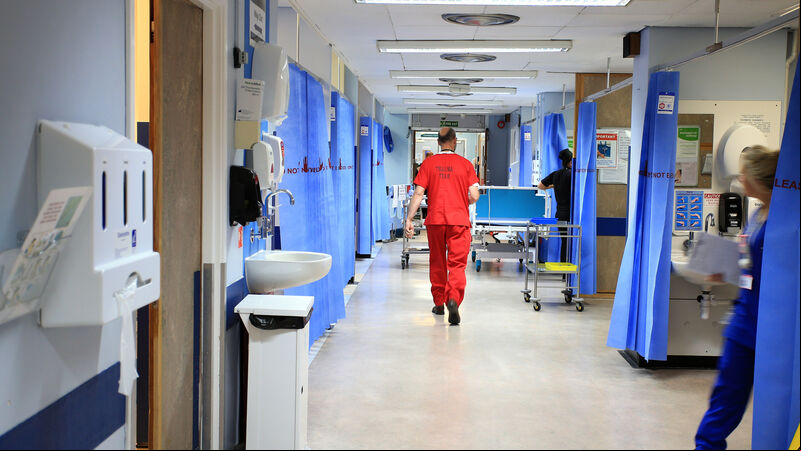INMO calling for urgent meetings with hospital groups as figures show 592 patients on trolleys

In Cork, 87 itted patients are waiting on beds- 72 at Cork University Hospital, 11 at the Mercy University Hospital, and four at Bantry General Hospital.
The Irish Nurses and Midwives Organisation (INMO) is seeking an urgent meeting with hospital groups amid concerns over the number of itted patients waiting for beds in Irish hospitals today.
592 itted patients are being treated on trolleys and chairs this morning, a figure which the organisation said represented a “high-risk event”.
In Cork, 87 itted patients are waiting on beds- 72 at Cork University Hospital, 11 at the Mercy University Hospital, and four at Bantry General Hospital.
“We are seeing trolley figures today that we would usually see at the height of winter, “ said INMO General Secretary Phil Ní Sheaghdha.
“The fact that 592 patients have been itted to hospital today, October 3rd, without a bed is a high-risk event.”
Ms Ní Sheaghdha said that are concerned about the spread of infections such as Strep A, Norovirus and Covid-19 and she said that is clear that the spread of viruses is going to have a “detrimental impact” on patient flow throughout hospitals over the coming weeks.
“While University Hospital Limerick has seen over one hundred patients a day on trolleys since September 19th, there is a significant amount of people on trolleys in each corner of the country, with high numbers attending in Cork University Hospital, St. James’s Hospital, Sligo University Hospital, Letterkenny University Hospital, University Hospital Kerry and Naas General Hospital."
She said the INMO are urgently looking to meet each individual hospital group to hear how they plan to deal with the overcrowding crisis that "is materialising in the vast majority of Irish hospitals and how they will protect our and the patients in their care."
She added: “Each hospital group should be engaging with their local communities and be upfront about the level of overcrowding and unsafe staffing in each hospital. Those who need care in our hospitals deserve to know what they can expect upon arrival at any ED.”










 App?
App?


